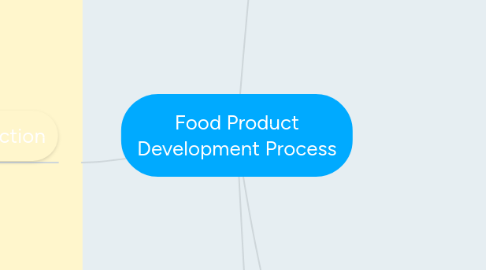
1. I: Product definition
1.1. Strategic plan
1.1.1. Vision of the company's direction
1.1.2. 3RD generation R&D
1.1.2.1. Overall technology strategy
1.1.2.2. Project goals and priorities
1.1.2.3. Allocate resources
1.1.2.4. Balance the portfolio
1.1.2.5. Measure results
1.1.2.6. Evaluate progress
1.2. Market Opportunity Assessment
1.2.1. Consumer research
1.2.1.1. Focus groups (Qualitative)
1.2.1.2. Conjoint analysis (Quantitative)
1.2.1.3. Consumer opportunities translated into product concepts
1.3. The Business Plan
1.3.1. Market opportunity and programme required
1.3.1.1. Define business situation
1.3.1.2. Opportunities and problems
1.3.1.3. Specific business objectives
1.3.1.4. Marketing strategy
1.3.1.5. Responsibility for execution
1.3.1.6. Timetable and tracking mechanisms
1.3.1.7. Forecasts and budgets
1.4. Product definition
1.4.1. Integration of consumer research and business objectives
1.4.1.1. Quality Functional Deployment
1.4.1.2. Who are the consumers?
1.4.1.3. What is it that they want?
1.4.1.4. How will our product adress those wants?
2. II: Product Implementation
2.1. Prototype development
2.1.1. Profile attribute analysis (PAA) method
2.1.1.1. objective method of sensory analysis that uses an experienced and extensively trained panel to describe numerically the attributes of the complete sensory experience of a product
2.1.1.2. cost-effective tool
2.1.1.3. takes advantage of the use of powerful statistical techniques, such as Analysis of Variance
2.1.1.4. competitive product evaluations (benchmarking) and product optimization
2.2. Benchmarking
2.2.1. Competitive product evaluations provide formulators with objective information regarding the flavor quality of competitive products and the areas of flavor opportunity.
2.3. Product Optimization
2.3.1. Response surface methodology (RSM)
2.3.1.1. reveal the “best” formulation(s) that will maximize (or minimize) the attribute
2.3.1.2. product optimization time is greatly reduced from traditional “cook and look” optimization techniques that depend on subjective formulation and evaluation procedures
2.3.1.2.1. stop short of fully realized product improvements
2.4. Market strategy and testing
2.4.1. At this point, things can go wrong if you launch the product in big volume
2.4.2. Long run sales
2.4.2.1. Based on two types of consumer behavior
2.4.2.1.1. product trial
2.4.2.1.2. repeat purchase
2.4.2.2. Forecasts
2.4.2.2.1. stochastic or random models
2.4.2.2.2. trial/repeat and attitude models
2.5. Scale-Up and Trial Production
2.5.1. total quality program that continuously identifies, analyses, and controls risk
2.5.1.1. identification of all potential hazards and proceeds through the screening
2.5.1.2. analysis ranking
2.5.1.3. quantification and evaluation stages
2.5.1.4. and ultimately to the controlling of the risks
3. III: Product introduction
3.1. Sales supported through functional areas
3.2. Marketing
3.2.1. Meet the needs to the consumer
3.3. Distribution
3.3.1. Appropiated package and price
3.3.2. Distribution system without impediments to guarantee quality
3.4. PRODUCT SUPPORT
3.4.1. Builds product success and repeats business
3.4.2. Feedback valuable information to the other functional areas
3.4.2.1. Lead the process to
3.4.2.1.1. Line extensions
3.4.2.1.2. Product upgrades
3.4.2.1.3. Creation of new opportunities
4. Conclusions
4.1. Symptoms of a broken process
4.1.1. Longer development time than competitors
4.1.2. Missed targeted introduction dates
4.1.3. Significant number of “crash projects”
4.1.4. A succession of stop/go decisions.

